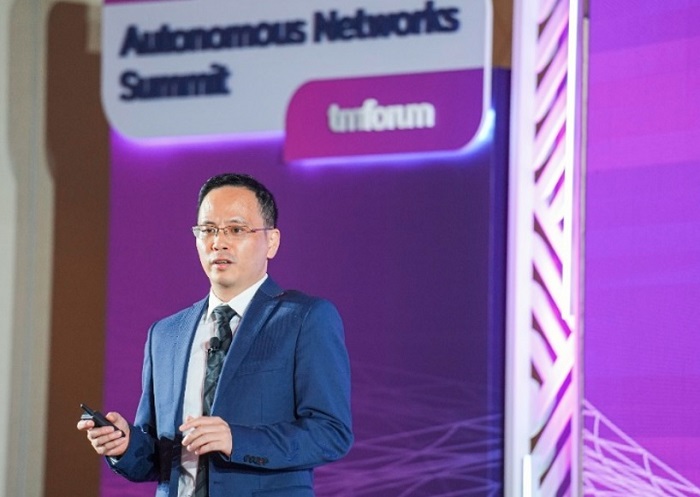Autonomous Networks trend gains momentum with launch of Whitepaper 4.0 at Bangkok summit
By Digital News Asia November 3, 2022
- Operators will build a self-fulfilling, self-healing & self-optimizing network
- Survey shows operators expect to reap more growth opportunities by 2024
.jpg)
The Autonomous Networks Summit 2022 was successfully held in Bangkok, Thailand last week. The summit aimed to build a global communication and cooperation platform for Autonomous Networks (AN), while continuously deepening industry consensus.
Other objectives included the sharing of latest standards progress and business achievements, encouraging discussion on future network evolution, and supporting an accelerated development of the global digital economy.
A key development within the networking world, Autonomous Networks is seen as transformational paradigm to ensure that the operation of the network is aligned with the goals of the business while delivering services quicker, cheaper and simpler to deploy and manage.
Significantly, after three years of development, the technology, media and telecommunications (TMT) industry has reached a consensus on the vision, architecture, level standards, and core concepts of AN. To move AN from strategy to implementation, TM Forum and industry partners jointly released the Autonomous Networks Whitepaper 4.0 during the Bangkok summit.
The whitepaper not only summarizes the four-element methodology for implementing AN but also includes more than 20 scenario-specific solutions in four categories: vertical industry enablement, customer experience and service growth, efficient operations, and green energy. This effectively enables operators to improve quality and efficiency and facilitate digital development.
.jpg)
In his welcome speech, TM Forum's CTO George Glass (pic, below) said, "From my perspective, the more exciting thing is the opportunity for revenue growth, the opportunity for telcos to move into new business areas that are being digitized themselves and start to create new capabilities, new products and new services that are completely dependent on the concepts and capabilities delivered by Autonomous Networks.

Aaron Boasman-Patel (pic, below), VP of TM Forum, said: "After more than three years of development, Autonomous Networks has become a common consensus in the industry. According to our recent survey, most operators think their organizations will move to at least L3 in the next three years, and with the autonomous level improved, operators will realize business diversification, enabling them to capture more growth opportunities by 2024."

Han Lu (pic, below), Deputy General Manager of China Mobile Anhui, emphasized: "Based on the 'three matches' (key services, organization process, and efficiency first) to the Autonomous Networks framework of China Mobile, China Mobile Anhui built up Self-X capabilities to benefit customers with Self-X experience."
.jpg)
Wasit Wattanasap (pic, below), Head of Nationwide Operation & Support Business Unit from AIS, said in his keynote: "AIS proposed the digital strategy 'Cognitive Tech-Co', aiming to transform from a traditional communications service provider to a cognitive technology company to deliver a distinctive user experience for every customer. Along this digital transformation journey, Autonomous Networks has been playing a significant role and has become the cornerstone of this journey. Our goal is to reach L3 by 2023 and L4 by 2025."

When sharing insights into operators' AN practices, Mark Mortensen (pic, below), Principal Analyst of ACG Research, concluded: "We find that operators are using the four-element methodology proposed by TM Forum to guide their deployment of Autonomous Networks. This can effectively help operators define their target network architecture, evaluate their network automation level, formulate evolution objectives and paths, and gradually improve the network automation level in an iterative manner."

Lin Yongming (pic, below), ADN Chief Strategy Officer (CSO) of Huawei, said: "Adhering to the principles of native intelligence, single-domain autonomy, and cross-domain collaboration, Huawei continues to build the ADN solution characterized by full-stack AI at the NE, network, and service layers to help operators achieve their goals of reaching L3 AN by 2023 and L4 by 2025, embrace the 5.5G era, and stride towards an intelligent world."

More and more operators are choosing AN as a core strategy to support their digital transformation, and the industry standards system is becoming increasingly mature.
It is therefore safe to say that AN is no longer just an ideal and a strategy, but a reality that is available to implement. AN is in the high-speed phase of development. With combined efforts of all partners, AN is set to maintain healthy development, with operators expected to build a self-fulfilling, self-healing, and self-optimizing network to support their goals of improving quality and efficiency and boosting digital development. All this puts the "zero wait, zero fault, and zero touch" vision within reach.
Exciting times are ahead.


